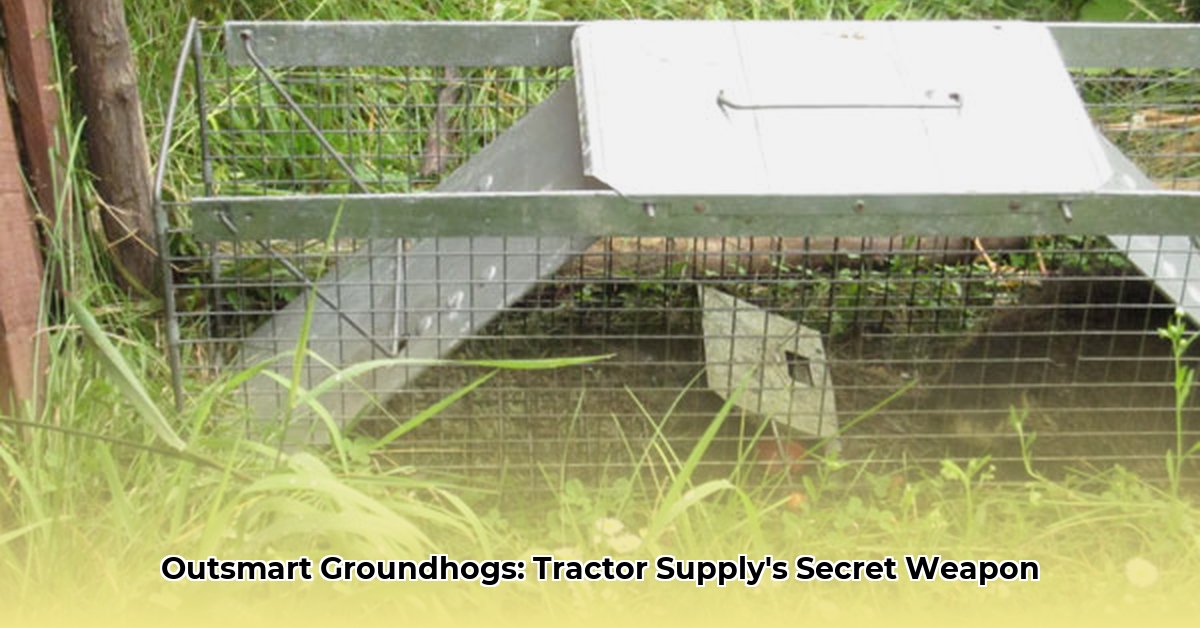
Understanding the Groundhog Problem: It's More Than Just Nibbles
Before considering any control methods, assess the extent of the groundhog damage. Is it a few nibbled leaves, or a widespread infestation threatening your entire harvest? A small problem requires a different strategy than a large-scale issue. Careful observation will determine the best approach, guiding your choice toward the most effective and humane solution. This initial assessment is crucial for developing a targeted and practical plan. For more options, check out Tractor Supply options.
Non-Lethal Groundhog Control: The Gentle Approach
Trapping should be a last resort. Non-lethal methods are kinder to wildlife and better for the environment. These strategies focus on deterring groundhogs without harming them.
Habitat Modification: Groundhogs thrive in areas with dense vegetation and ample cover for burrows. Maintaining neatly mowed fields, removing excess brush, and eliminating potential hiding places significantly reduces their attractiveness. This simple change can be a surprisingly effective deterrent.
Repellents: Many commercial and homemade repellents exist, but their efficacy varies widely. Some farmers report success with strong-smelling herbs or even human hair scattered around vulnerable areas. Experimentation might be necessary to find what works best on your specific land. Remember – consistent application is key.
Exclusion: This involves creating physical barriers to prevent groundhog access to crops. Strong fences, wire mesh, or hardware cloth strategically placed around vulnerable areas can effectively protect your plants. Careful planning is essential to ensure the barrier's effectiveness.
Trapping Groundhogs: When Other Methods Fail
If non-lethal methods prove ineffective, trapping might be necessary. Tractor Supply and similar stores sell various traps. However, always prioritize humane treatment.
Step-by-Step Humane Trapping:
Trap Selection: Choose traps designed for humane capture, minimizing stress and injury to the animal. Research different trap types to find the most appropriate and effective choice for your situation.
Strategic Placement: Groundhogs follow established paths and have preferred burrows. Place traps along these paths or near burrows, ensuring the trap is well-concealed.
Effective Baiting: Use attractive bait, such as carrots or apples, strategically placed within the trap to lure groundhogs. Fresh bait is generally more effective.
Regular Monitoring: Check traps at least twice daily to ensure the well-being of any trapped animals and to prevent escapes. Prompt attention is critical for responsible trapping.
Relocation or Disposal: Relocate captured groundhogs to a suitable habitat far from your property, adhering to all local regulations. If relocation is not feasible, contact your local animal control or wildlife authorities for guidance on proper disposal.
Integrated Pest Management (IPM): The Sustainable Approach
IPM is a holistic strategy encompassing various techniques to minimize pest impact. It's a balanced approach that considers the entire farm ecosystem.
- Crop Rotation: Rotating crops disrupts pest life cycles, reducing their populations.
- Biological Control: Introducing natural predators or beneficial insects can help manage pest numbers.
- Monitoring: Regularly assess pest populations to implement necessary control measures promptly and efficiently.
Weighing the Pros and Cons: Groundhog Traps from Tractor Supply
Trapping offers a targeted solution, but improper use can have negative consequences. Humane trapping requires responsible planning and execution. Consider the ethical and practical implications before proceeding. Always prioritize prevention over lethal methods.
Key Takeaways:
- Sustainable pest management integrates various techniques, prioritizing non-lethal approaches.
- Trapping from Tractor Supply can be part of a larger IPM strategy, but humane practice is paramount.
- Prevention through habitat modification and exclusion remains a crucial strategy for long-term success.
Remember, a successful strategy involves a combination of preventative measures and targeted control methods. Consult local agricultural extension services for region-specific advice. They can provide valuable insights and further guidance.